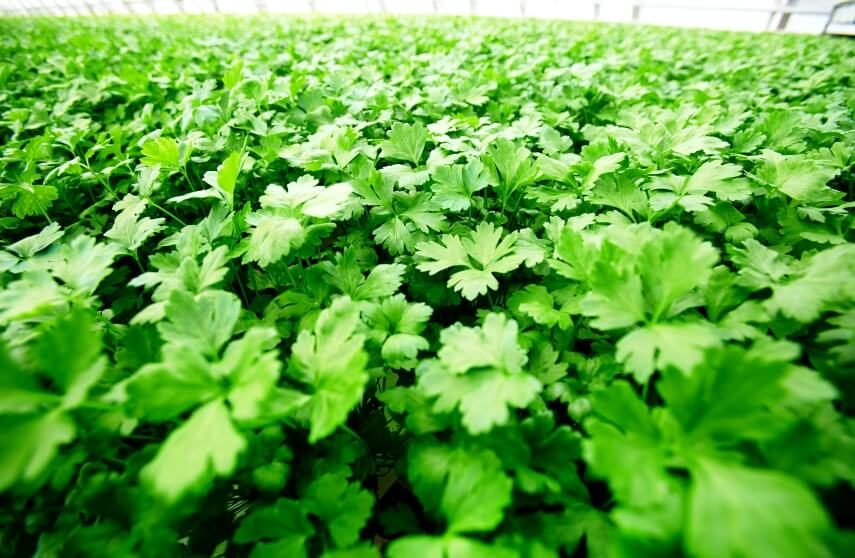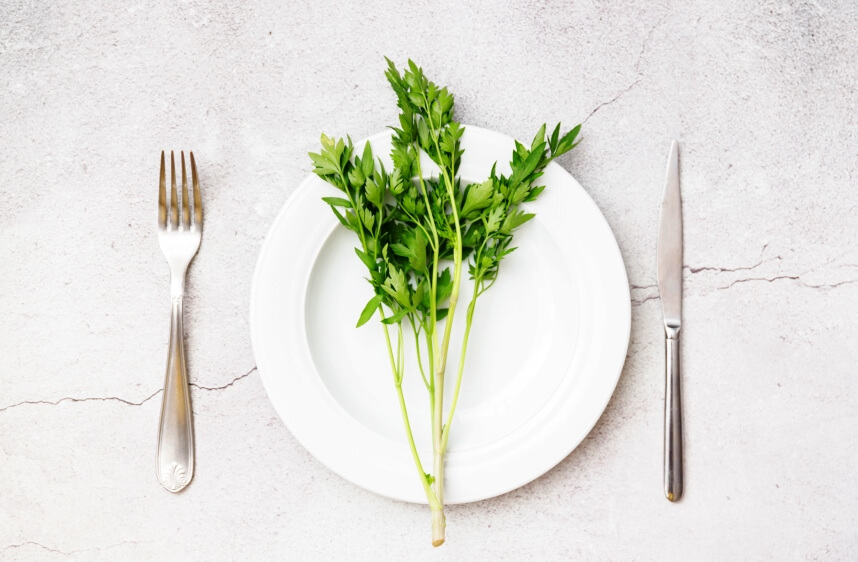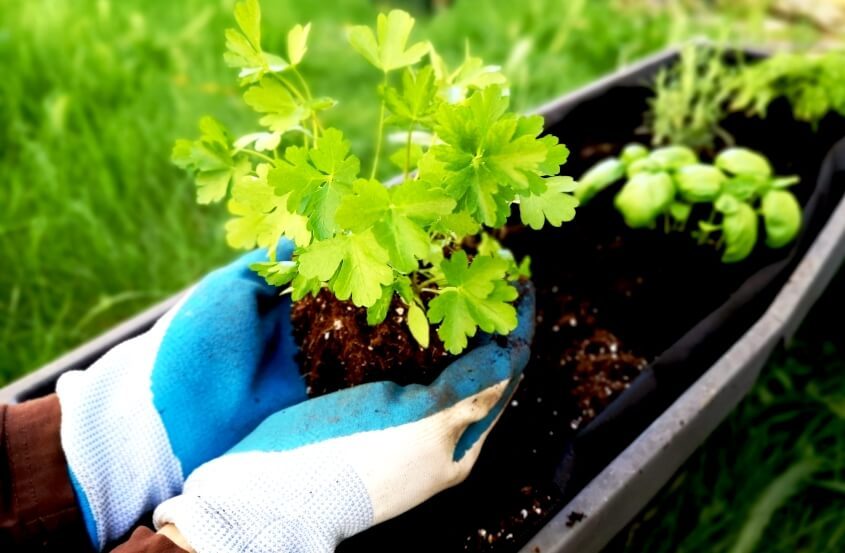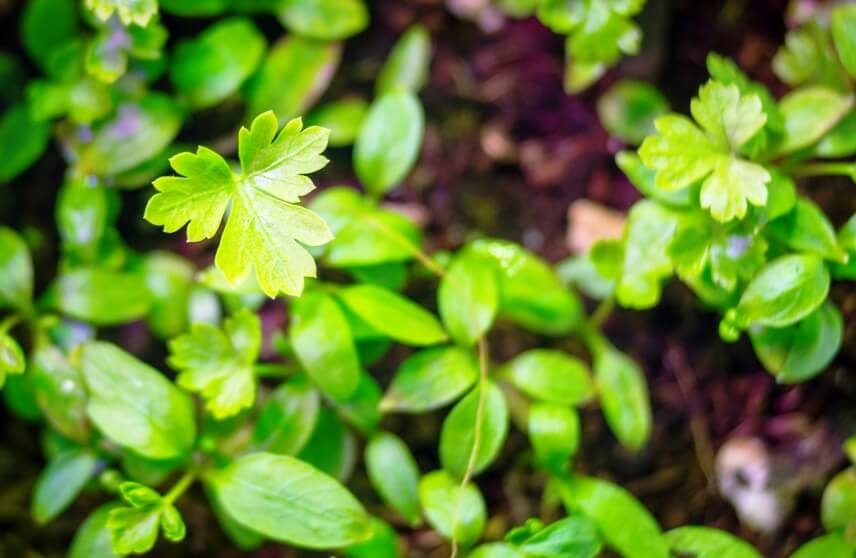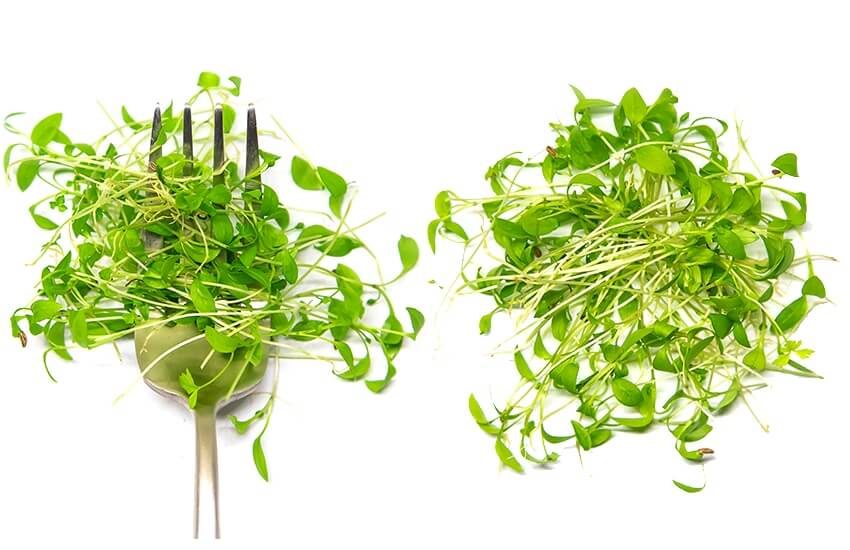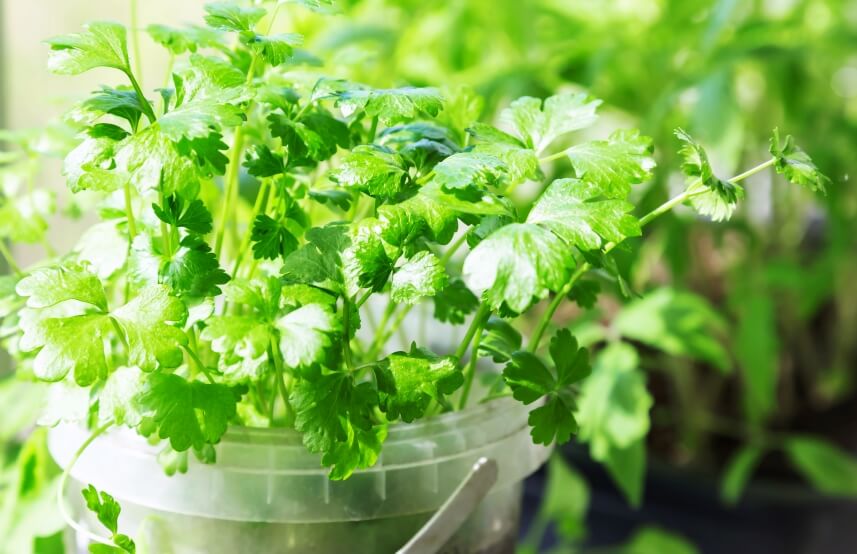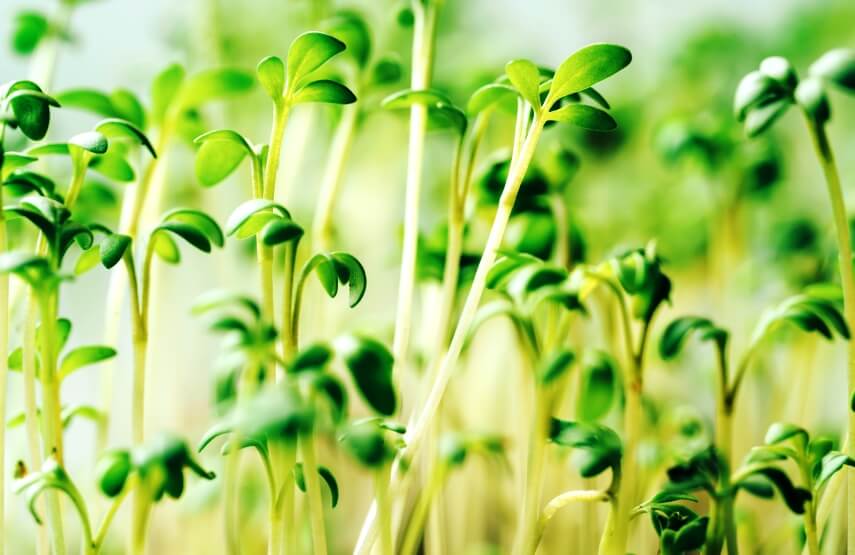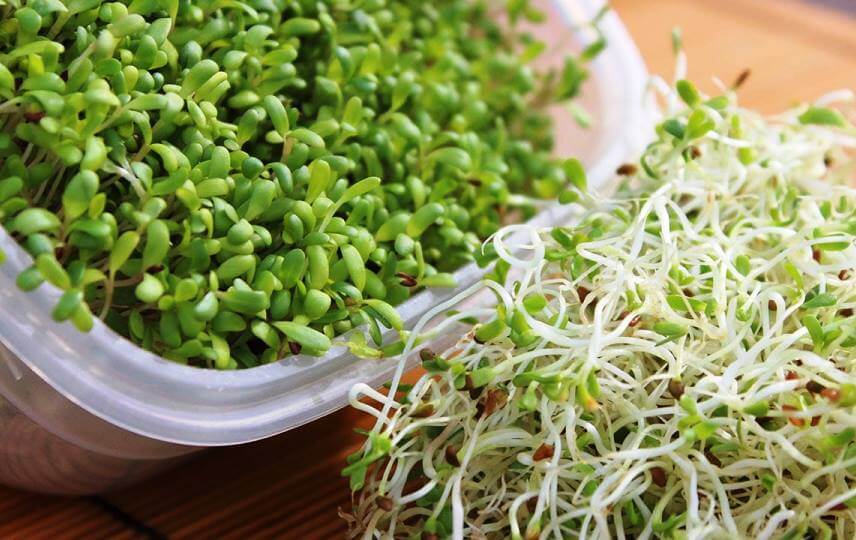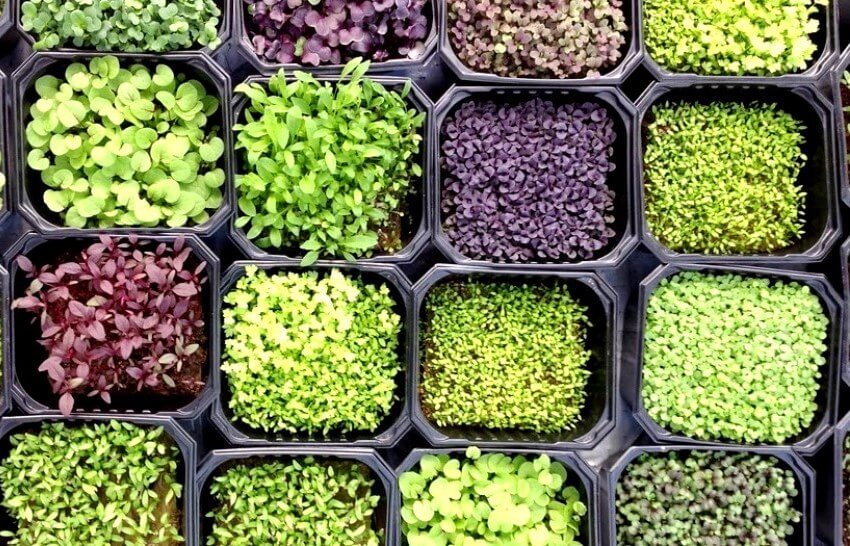The flavor of micro parsley is distinctly sweet and spicy. Cultivating parsley microgreens is really gratifying as they are one of the best food garnishes and have a nice flavor. Most chefs favor the flat-leafed variety of parsley since it has a stronger flavor.
The issue with micro parsley is that it requires a lot of patience to mature, taking longer to germinate (8 to 12 days, even with pre-soaking the seed) and reach the true-leaf stage. As a result, if you are new to indoor gardening, it is better to start with other microgreens first as they are simpler to produce, such as radish or alfalfa microgreens.
If Like to know more about microgreens, check these articles:
<<What Are Microgreens >> and <<Microgreens Benefits for Skin>>
Parsley microgreen varieties
Fresh parsley comes in two varieties, both of which are regularly found in food stores. Their descriptive names, curly leaf parsley and flat leaf parsley, are how most people are familiar with them. French parsley, also known as curly leaf parsley, is frequently used as a garnish. While, Italian parsley, commonly known as flat-leaf parsley, is used more frequently as a salad and cooked food element since it has a more robust flavor [1].
Today most gardeners use Italian parsley variety to grow as microgreens.
Parsley History
Parsley has been cultivated for more than two thousand years ago. It is thought to be a native of the central Mediterranean. Italian parsley microgreen was initially grown in Southern California in the 1980s and 1990s, together with other well-liked microgreens.
Immigrants and tourists later brought it to the United States in the 17th century. Today, Micro Italian parsley is widely available in specialty stores. It can be found in Europe, Asia, Australia, South America, and North America.
In California, micro-Italian parsley gained popularity in the 1980s and 1990s as chefs sought new ways to enhance the color and flavor of their plate presentations. Chefs and home cooks use micro-Italian parsley for its convenience of use and mild, unobtrusive flavor in meals [2].
Parsley microgreens overview
| Family | Apiaceae |
| Recommended Varieties | flat leaf parsley (Italian parsley) |
| Nutrition | Vitamins A, C, K, potassium, magnesium, and calcium |
| Average days to germinate | 8 to 12 days |
| Average days to harvest (after germination) | 12 to 16 days |
| Difficulty | Medium |
Nutritional facts of parsley microgreen
Vitamins A, C, and K, fiber, potassium, magnesium, and calcium are all included in parsley microgreens. Additionally, parsley has a lot of potent antioxidants that are good for your health.
Parsley microgreen health benefits
Micro parsley has similar health advantages to mature parsley. When compared to mature plants, parsley microgreens have significantly more nutrients. This indicates that their potential health benefits are more noticeable. Following are some of the key health benefits of parsley [3]:
Healthy bone
Different levels of specific vitamins and minerals are required to keep your bones healthy and strong. The parsley microgreen is full of vitamin K, a necessary mineral for strong bones. Consuming meals high in this vitamin has been associated with better bone mineral density and a decreased risk of fractures.
Vitamin K supports osteoblasts, which are cells that help make bones stronger. Additionally, this vitamin stimulates several proteins that raise bone mineral density.
Cancer prevention
Plant chemicals found in parsley may have anticancer properties. This microgreen is very high in vitamin C and flavonoid antioxidants, which lessen oxidative stress in the body and may reduce your chance of developing some cancers.
Healthy eyes
Three carotenoids found in parsley, lutein, beta carotene, and zeaxanthin, support healthy eyesight and eye protection.
Age-related macular degeneration (AMD), which is an incurable eye disease and the main cause of blindness worldwide, may be prevented by lutein and zeaxanthin.
Another carotenoid that promotes eye health is beta carotene. Your body can transform this carotene into vitamin A. Vitamin A is necessary for eye health.
Healthy heart
Folate, a B vitamin that protects your heart and may lower your risk of heart disease, is abundant in micro parsley. High dietary folate intake may lower the risk of heart disease.
On the other hand, inadequate folate intake may raise your risk of heart disease. According to some studies, folate improves heart health by bringing down levels of the amino acid homocysteine. In several studies, elevated homocysteine levels have been associated with an increased risk of heart disease.
How to grow parsley microgreens
It takes 8 to 12 days for the parsley to germinate. Allow it to reach 2 to 3 inches tall. You can harvest them almost three to four weeks after planting them. The procedure of growing parsley microgreens is almost similar to other microgreens. Read the <<Growing Microgreens >> article to learn more about the general method for growing microgreens.
Parsley microgreens Growing Tips
Growing tips
- The seeds should be soaked in lukewarm water for 4 to 8 hours before planting.
- After soaking, distribute the moistened parsley seeds as evenly as you can over the seed-starting sterile soil.
- Once your parsley seeds have sprouted, place the container beside a sunny window or on a kitchen counter where they receive enough sunlight to grow.
- Put the pot under a grow lamp for 12 to 16 hours if you do not have a window with plenty of sunlight.
- Check the soil every day, and water it gently with a spray bottle when it feels dry to the touch. Since parsley microgreen seedlings are so small and sensitive, overwatering could completely ruin your crop.
- You can also employ the bottom watering strategy. Fill the bottom tray with about a cup of water for an hour. The entire growing medium should progressively absorb the water during this time. Remove the remaining water from the bottom tray after an hour.
- Fertilize the crop every two weeks with an organic liquid fertilizer. This will enable you to cut three or four times in a row.
Harvesting Tips
- In around 3 weeks, your parsley microgreens will be ready for harvest. You can harvest your microgreens when the cotyledons have finished growing, and the first true leaves start to appear.
storing Tips
- Gather the parsley microgreens you just harvested and loosely wrap them in a paper towel. Your parsley microgreens will stay fresher longer if you use a paper towel to absorb any moisture.
- Put the microgreens in your storage bag or container and close it. Keep them in the refrigerator after that.
Culinary guide
You can use parsley microgreens in so many different meals. Pesto, soups, salads, pesto, and the list goes on. Almost everything may be topped with chopped parsley microgreens! You can also incorporate them into your upcoming smoothie. Parsley is one of those microgreens that goes with just about everything!
Here are some creative uses for parsley microgreens in food:


